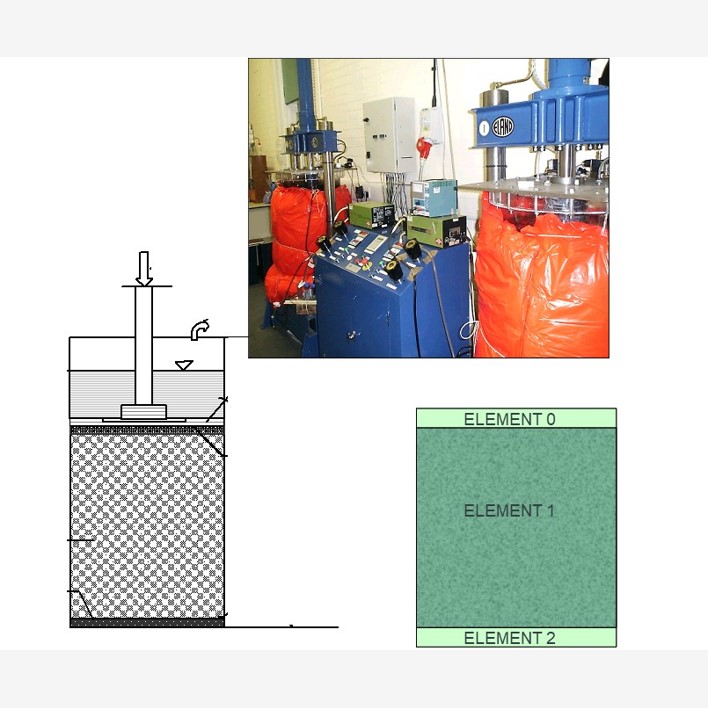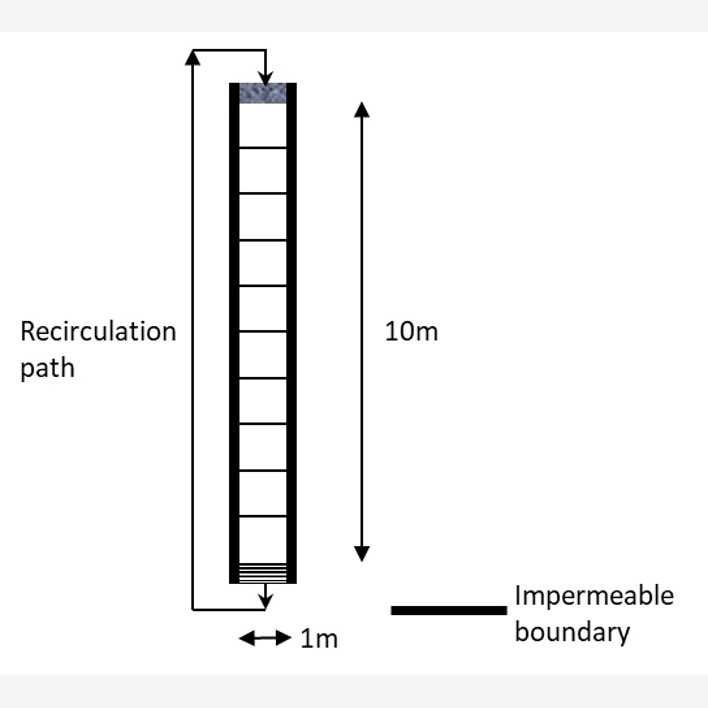Simulation data is produced for systems that that range in complexity from simple one dimensional models to complex 2D and 3D models. The simplest one dimensional model is the single element model. This is suitable for modelling landfill process concepts such as research laboratory cells containing large landfill waste samples. However, where it is important to capture the impact of the vertical variability that is strongly exhibited in landfill waste properties, it is advisable to at least work with one dimensional models containing three to 20 elements in the vertical direction. When modelling the impact of the strong horizontal to vertical anisotropy exhibited in a landfill then larger two or even three dimensional models may be necessary. However due to the large number of waste property values that are involved, it should be borne in mind that the use of large models involves a heavy overhead when it comes to processing the simulation data.



An example of single element modelling using LDAT is described in the paper "Developments to a landfill process model following its application to two landfill modelling challenges" published by Elsevier in the Journal of Waste Management ...MORE
An example of two dimensional modelling using LDAT is described in the paper "A multi-component two-phase flow algorithm for use in landfill processes modelling" published by Elsevier in the Journal of Waste Management ...MORE
Single Element example
Link to Journal of Waste Management paper on single element modelling.
An example of single element modelling using LDAT is described in the paper "Developments to a landfill process model following its application to two landfill modelling challenges" published by Elsevier Click on this link: Developments to a landfill process model following its application to two landfill modelling challenges .
...BACKOne dimensional vertical stack example
Links to information about the results from the LDAT 10 element vertical stack default model
The first link above, 1D vertical stack model results downloads a Note on the results obtained from a 10 element vertical stack model, which is one of the default models available from the LDAT Dashboard. The model is run with simple passive boundary conditions, with leachate recirculation operating, and with aeration. The analysis of the results from the passive model has been extended to include further details about the leachate chemistry. These are of interest because they can be compared with the leachate characteristics that are expected to be found in real landfills. A Note on the extended analysis may be found hereSome leachate chemistry results and a Note on the expected characteristics is here Expected leachate chemistry characteristics
...BACKTwo dimensional example
Link to Journal of Waste Management paper on two dimensional modelling.
An example of two dimensional modelling using LDAT is described in the paper "A multi-component two-phase flow algorithm for use in landfill processes modelling" published by Elsevier Click on this link: "A multi-component two-phase flow algorithm for use in landfill processes modelling" .
...BACK